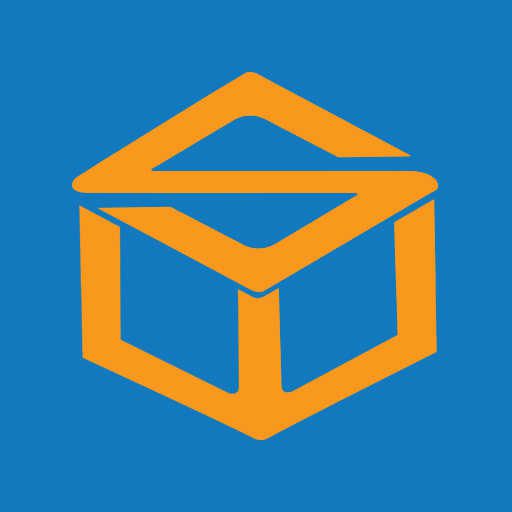Description

Scurri

Take App
Comprehensive Overview: Scurri vs Take App
Scurri
a) Primary Functions and Target Markets
Primary Functions: Scurri is a delivery management platform primarily serving e-commerce businesses. Its software helps streamline the shipping process, optimize delivery options, and enhance the post-purchase experience for customers. Key functionalities include:
- Integration with various e-commerce platforms like Shopify, WooCommerce, and Magento.
- Access to a wide range of courier services, allowing users to compare options and select the most efficient and cost-effective.
- Real-time tracking and reporting, helping businesses keep their customers informed about their delivery status.
- Automation of shipping labels and documentation to minimize manual errors.
Target Markets: Scurri targets medium to large e-commerce retailers and logistics companies that require a more efficient shipping process. It primarily serves markets in the UK, Ireland, and has expanding interests in Europe.
b) Market Share and User Base
Scurri has a robust presence in the UK and Irish markets, and while it may not have the global market share of larger logistics platforms, it is a significant player within its regional focus. It is favored by e-commerce businesses looking for tailored and reliable delivery management solutions without the complexities of more comprehensive logistics suites.
c) Key Differentiating Factors
- Integration Flexibility: Scurri offers extensive integration options with multiple e-commerce platforms, making it adaptable to existing business operations.
- Regional Expertise: Its specialization in the UK and Irish markets allows Scurri to offer more localized solutions, understanding and addressing region-specific logistical challenges effectively.
- Customer Support: Known for strong customer service, Scurri provides dedicated support to help businesses transition and make the most of their delivery management software.
Take App
a) Primary Functions and Target Markets
Primary Functions: Take App provides a simple platform for small businesses to create online stores and manage orders via WhatsApp. Functions include:
- Easy setup and management of digital storefronts without the need for extensive technological expertise.
- Order management and customer communication through WhatsApp integration.
- Simple payment processing and inventory management features.
- Analytic tools to track sales performance and customer behavior.
Target Markets: Take App primarily targets small to medium-sized businesses and local shops that traditionally rely on physical sales but are seeking to expand into online marketplaces smoothly. This includes restaurants, grocery stores, and local retailers, especially in regions where WhatsApp is a dominant communication tool.
b) Market Share and User Base
Take App is particularly popular in areas with high WhatsApp usage, such as Southeast Asia, Latin America, and parts of Europe and Africa. The user base tends to be small business owners who need cost-effective and straightforward digital solutions to reach their customers online.
c) Key Differentiating Factors
- WhatsApp Integration: Take App stands out with its seamless integration into WhatsApp, allowing businesses to leverage the existing communication habits of their customer base.
- Simplicity and Accessibility: The platform is designed for users with limited technical skills, prioritizing ease of setup and use.
- Affordability: It provides an economical solution for digital transition, removing barriers to entry for small businesses wanting to explore online sales.
Comparison Summary
- Target Market Focus: Scurri targets medium to large e-commerce businesses with complex logistics needs, whereas Take App serves small businesses looking to start online sales efficiently.
- Core Value Proposition: Scurri provides comprehensive delivery management, while Take App excels in merging online sales with popular communication tools like WhatsApp.
- User Base Characteristics: While Scurri's users are more likely to be established e-commerce players, Take App's user base consists largely of small businesses and shop owners new to digital commerce.
- Geographical Reach: Scurri has a strong regional focus in the UK and Ireland, whereas Take App caters to markets where WhatsApp is heavily used for day-to-day communication.
These key differences guide businesses in choosing between the two based on their needs, capabilities, and market focus.
Contact Info

Year founded :
2010
+44 20 3603 3123
Not Available
Ireland
http://www.linkedin.com/company/scurri

Year founded :
2021
Not Available
Not Available
Singapore
http://www.linkedin.com/company/take-app
Feature Similarity Breakdown: Scurri, Take App
Scurri and Take App serve different primary purposes but still have some overlapping areas when it comes to e-commerce support and logistics. Let's break down their features, user interfaces, and unique attributes.
a) Core Features in Common
-
E-commerce Integration:
- Scurri: Primarily focuses on providing shipping and delivery solutions that integrate with various e-commerce platforms.
- Take App: Offers a platform for businesses to create simple e-commerce stores, often integrated with messaging apps.
-
Order Management:
- Both platforms offer basic order processing and management functionalities, although they focus on different stages of the e-commerce process.
-
Automation:
- Automation is a shared feature, where Scurri automates logistics and delivery processes, while Take App automates sales and customer interactions.
b) User Interfaces Comparison
- Scurri:
- Designed with a focus on logistics professionals, its interface is more technical, reflecting its focus on shipping labels, carrier management, and logistics data.
- Offers dashboards and tools for tracking deliveries and analyzing shipping metrics.
- Take App:
- Has a simpler, more user-friendly interface aimed at small businesses and individuals setting up online stores quickly.
- Focuses on ease of use with drag-and-drop features and simple templates for non-technical users to set up e-commerce storefronts integrated with messaging platforms.
c) Unique Features
-
Scurri:
- Carrier Management: Offers robust features for integrating with multiple carriers, optimizing delivery routes, and managing shipping costs.
- Advanced Data Analytics: Provides detailed analytics to track shipping efficiency and customer satisfaction regarding deliveries.
- Scalability for Large Enterprises: Highly scalable for larger businesses with complex logistics needs.
-
Take App:
- Messaging App Integration: Uniquely focused on leveraging messaging platforms for selling, offering an edge in regions where messaging apps are highly prevalent for business communications, such as WhatsApp integration.
- Quick Store Setup: Allows for rapid setup of e-commerce stores, appealing to small businesses and entrepreneurs looking for minimal barriers to entry.
- Social Media Integration: Strong features for integrating with social media platforms, useful for businesses that rely heavily on social media marketing.
In summary, while both Scurri and Take App share some e-commerce-related functionalities, they are distinct in their core offerings and target markets. Scurri excels in logistics and delivery management, while Take App offers a simplified approach to setting up online stores with an emphasis on messaging and social media integration.
Features

Not Available

Not Available
Best Fit Use Cases: Scurri, Take App
a) Scurri
Best Fit Use Cases:
Types of Businesses or Projects:
-
E-commerce Companies: Scurri is especially beneficial for online retailers of all sizes looking to optimize their shipping processes. It helps streamline label generation, delivery tracking, and customer notifications.
-
Retailers with Multiple Carriers: Businesses that work with various courier services can benefit significantly by using Scurri to integrate all carrier services under one platform.
-
Subscription Box Services: Companies offering subscription services can use Scurri to ensure timely and efficient deliveries, which is crucial for customer satisfaction.
-
Third-Party Logistics Providers (3PLs): 3PL companies managing order fulfillment and shipping for other businesses can use Scurri to enhance their service offerings and efficiency.
Company Size:
-
Small to Medium Enterprises (SMEs): SMEs that require a cost-effective, yet scalable solution for their shipping processes will find Scurri attractive.
-
Large Enterprises: Companies with high-volume shipping needs can also leverage Scurri for its robust integration capabilities and automation features.
b) Take App
Preferred Scenarios:
Types of Businesses or Projects:
-
Small Businesses and Local Stores: Local retail shops and small food establishments can use Take App to establish a straightforward online ordering process without needing extensive technical capabilities.
-
Restaurants and Cafes: Businesses in the food service industry looking to offer delivery or pickup services can benefit from the simplicity and efficiency of Take App.
-
Service-Based Businesses: Freelancers or small service providers (like hairdressers or consultants) can use Take App for bookings or appointment settings with ease.
Company Size:
-
Micro and Small Enterprises: Suitable for businesses that do not require complex e-commerce capabilities, Take App offers a lightweight solution.
-
Startups: Emerging businesses that need a quick and easy method to interact with customers online might prefer Take App's user-friendly platform.
d) Industry Verticals and Company Sizes
Scurri:
-
Industry Verticals: Predominantly serves e-commerce, retail, logistics, and distribution sectors that focus heavily on physical goods shipping.
-
Company Sizes: While scalable for larger enterprises, Scurri also allows smaller companies to take advantage of enterprise-level logistics capabilities without overwhelming costs.
Take App:
-
Industry Verticals: Primarily serves the food and beverage industry, small retail, and personal services sectors that require straightforward interactions with consumers.
-
Company Sizes: Caters to micro to small-sized businesses that need a simple entry point to digital commerce or online customer engagement; an ideal solution for startups and local operators too.
Both Scurri and Take App offer specialized solutions that cater to businesses based on their size, industry focus, and operational needs. Scurri provides more comprehensive logistics and shipping capabilities, appealing to companies with higher complexities in their delivery systems, while Take App targets quick, easy, and user-friendly approaches for small, service-oriented enterprises.
Pricing

Pricing Not Available

Pricing Not Available
Metrics History
Metrics History
Comparing teamSize across companies
Conclusion & Final Verdict: Scurri vs Take App
When evaluating Scurri and Take App, it is essential to weigh their respective strengths, weaknesses, and overall value proposition to determine which product aligns best with user needs. Both have distinct offerings tailored to specific business requirements.
a) Best Overall Value:
Scurri tends to offer the best overall value for businesses primarily focused on logistics and optimizing their shipping processes. It is particularly suited for companies with a high volume of shipments and those seeking enhanced efficiency in delivery tracking and management.
b) Pros and Cons:
Scurri:
-
Pros:
- Robust Shipping Solutions: Scurri offers comprehensive shipping and delivery solutions, integrating with multiple carriers for streamlined operations.
- Scalability: Suitable for small to large enterprises, supporting increased shipment volumes as businesses grow.
- Integration Capabilities: Easily integrates with various e-commerce platforms and systems, enhancing operational efficiency.
- Data Analytics: Provides valuable insights and detailed reporting features to optimize logistics.
-
Cons:
- Complexity: May require a learning curve for setup and utilization due to its extensive features.
- Cost: Could be more expensive for smaller businesses with lower shipping volumes.
- Limited to Logistics: Mainly focuses on logistics without broader functionalities beyond shipping.
Take App:
-
Pros:
- Ease of Use: User-friendly interface and straightforward setup, making it accessible for small to medium-sized businesses.
- Cost-Effective: More affordable, providing good value for companies that do not require advanced logistics features.
- Versatility: Offers a range of features beyond shipping, including order management and customer engagement tools.
-
Cons:
- Limited Shipping Features: May not have as extensive shipping management and carrier integration as Scurri.
- Scalability Issues: Might face challenges handling very high transaction volumes or complex logistics needs.
- Integration Limitations: Fewer integrations with third-party logistics providers.
c) Recommendations:
For users deciding between Scurri and Take App:
-
Choose Scurri if your primary requirement is sophisticated logistics management with robust shipping solutions and analytics, especially beneficial for larger businesses or those with complex shipping needs.
-
Choose Take App if your business requires a versatile platform with easy setup and management, ideal for smaller enterprises or those seeking a broader range of tools at a lower cost.
Ultimately, the decision should be based on the specific business needs, budget constraints, and desired features each platform offers. Businesses should assess their current and future logistics and operational demands to make an informed choice.
Add to compare




